- Established 1982 -HOME: www.hiltonpond.org
THIS WEEK at HILTON POND Subscribe for free to our award-winning nature newsletter (Back to Preceding Week; on to Next Week) |
MORE ABOUT WOOD DUCKS, March arrived at Hilton Pond Center after an incredibly wet February that brought 5.51" of rain and left our trails soggy--and in some cases, submerged. It's been so wet our Wood Ducks are having to roost in the trees to stay dry!
All text, maps, charts & photos © Hilton Pond Center Just kidding, of course. Wood Ducks are "waterproof" and actually do spend time in arboreal habitats. Before humans started putting up nest boxes, these native waterfowl laid their eggs in big tree hollows--often quite high above ground level. At the Center on the morning of 1 March we watched as a hen flew to a limb about 75 feet up a Black Walnut tree (see photo above), followed soon after by a drake (below). It seems odd a web-footed duck is able to perch on tree branches, but woodies obviously do quite well.
All text, maps, charts & photos © Hilton Pond Center Wood Ducks are externally dimorphic, the less colorful female out-styled by her mate. (Many folks consider male woodies to be the most eye-pleasing freshwater ducks in North America.) Their markings don't show well in the photos above taken under very gray morning skies, but you can still make out the large white eye-ring of the female and bright patterning on the red-eyed male. Our time spent last month to clean out and replace pine shavings in the Wood Duck boxes at Hilton Pond Center did seem to pay off. By the morning of 11 March a pair of woodies indicated they've staked a claim to the box on the east bank of the pond--the one closest to the Center's old farmhouse.
All text, maps, charts & photos © Hilton Pond Center The female alternately swam and perched atop the box several times (see photo above), while the drake paddled in small circles--apparently standing guard to make sure no other hormonal male Wood Duck tries to sneak in for extra-pair copulations. Some days the hen stood on one leg (as above), seemingly keeping as close an eye on the male as he did on her. (Notice how brown the pond water is from all our recent rain and run-off.) Occasionally we've seen the female enter through the four-inch hole in the box, indicating she's either ready to lay or is already placing eggs in the nest. By late afternoon she departs with the male for parts unknown, probably to roost in a tall tree some distance away. She won't begin incubating until her clutch is complete, assuring all her ducklings hatch at once. One-a-day egg-laying can take a while because woodies typically have clutch sizes of 12-16 or more. (See photo below from a previous year.)
All text, maps, charts & photos © Hilton Pond Center We're not sure what happened to another two pairs of Wood Ducks that were present the past few months. It's possible the now-resident duo drove them off, but we doubt that's the case. Those other birds may still end up occupying any of the remaining three boxes on Hilton Pond, or perhaps one of two we erected on a lower impoundment that's partly on our property. And, in spite of our honest efforts, one pair may show disdain for our low-cost housing and once again nest in a cavity in that giant American Sycamore in our neighbor's backyard. All text, maps, charts & photos © Hilton Pond Center
All text, maps, charts & photos © Hilton Pond Center A friend in southern Louisiana reported on 2 March 2019 her first returning Ruby-throated Hummingbird of the new season--an adult male feeding on just-opened flowers of Red Buckeye, Aesculus pavia (see our file photo above). This plant occurs naturally in the southeastern U.S. and is one of Operation RubyThroat's "Top Ten" native flowers for hummers. It is a medium-sized tree/shrub that flowers early before many other nectar sources have blossomed; as such, it can provide valuable sustenance for early-migrant hummers. We planted a couple of these buckeyes at Hilton Pond; they bloom annually and even make a few nuts each year. For the record, our earliest RTHU at Hilton Pond Center was 26 March 2015--a male we had banded locally on 27 March the year before. Curiously, our earliest unbanded male Ruby-throated Hummingbird has arrived on 27 March in four different years (1991, 2011, 2015, and 2017). That said, it's more typical for our first male to show up the first week in April, with earliest females a week or ten days behind their potential mates. All text, maps, charts & photos © Hilton Pond Center (Click on map above for a larger version in a new browser window) Since one of our most-heard questions concerns when to put out hummingbird feeders in spring, we again provide the map above as a guideline. (Our rule of thumb for Hilton Pond Center and folks at out latitude is to have all feeders hanging by St. Patrick's Day on 17 March.) Keep in mind that coastal locations may get Ruby-throated Hummingbirds much earlier, while feeders at higher elevations may be a week or more behind. All text, maps, charts & photos © Hilton Pond Center
All text, maps, charts & photos © Hilton Pond Center Our recent on-line photo essay #688 dealt with this year's "glut" and near-sudden disappearance of wintering Purple Finches at Hilton Pond Center. We also talked about ageing and sexing PUFI and posted the photo above of an older, fifth-year bird with a pink wash--unusual for a female. On 10 Mar 2019 we caught, banded, and released a "calico" male House Finch that also had atypical plumage (see photo below)--a mix of red and yellow.
All text, maps, charts & photos © Hilton Pond Center "Normal" House Finch males acquire red feathers by the end of their first autumn, but old females sometimes take on a reddish or yellowish hue along with their standard brown plumage. Somewhat pointed tail feathers indicated this latest bird above was in his second year--he hatched in 2018--so we're certain he's a male that didn't lay down enough red pigment. It's hard to say what might cause such aberration. Perhaps this HOFI didn't get his full share of carotene or xanthophyll pigments from seeds and insects as he was maturing. Or maybe he hatched very late in the season and had too little time to bring in all his adult feathers. We're more inclined to think he simply had some sort of malfunction in his pigment-placing mechanisms. Ideally, this House Finch will survive, hang around Hilton Pond, breed locally, and get recaptured sometime this fall. At that point it will be interesting to see if he has acquired "normal" full red feathering, or if he retains his odd but eye-pleasing two-tone coloration. All text, maps, charts & photos © Hilton Pond Center
Checks also can be sent to Hilton Pond Center at: All contributions are tax-deductible on your Don't forget to scroll down for Nature Notes & Photos, |
|---|
|
"This Week at Hilton Pond" is written and photographed by Bill Hilton Jr., executive director of Hilton Pond Center for Piedmont Natural History
|
|
|
Please refer "This Week at Hilton Pond" to others by clicking on this button: |
|

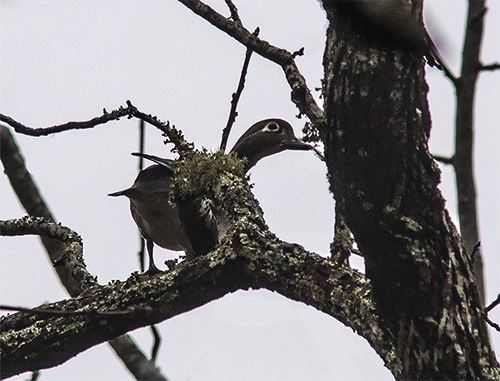
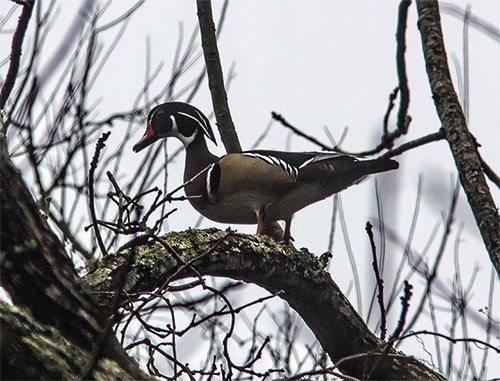
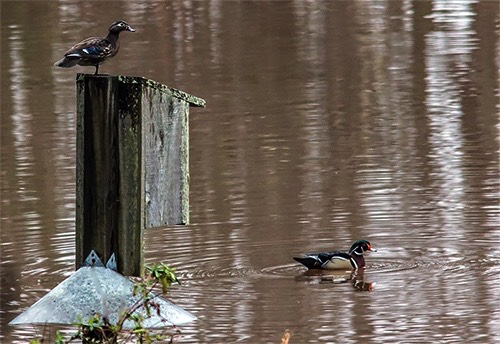
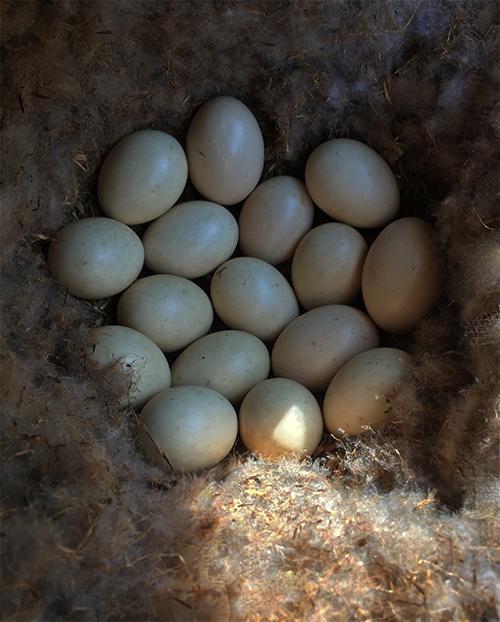
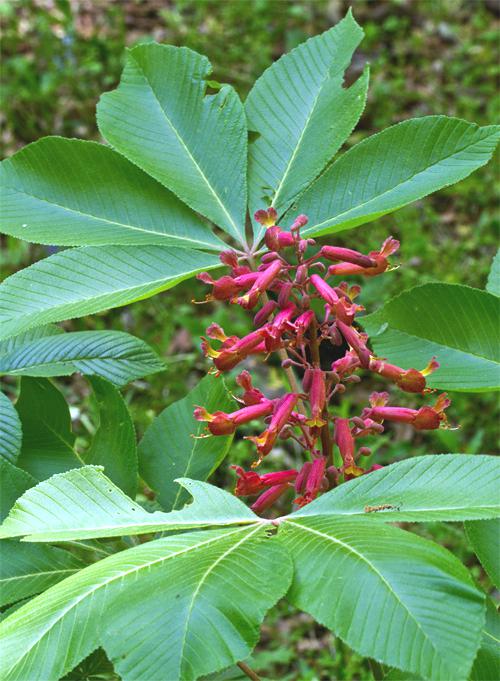
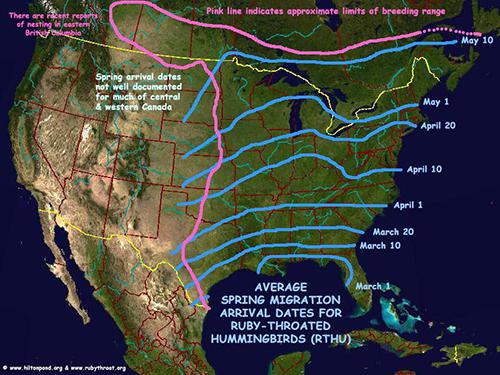
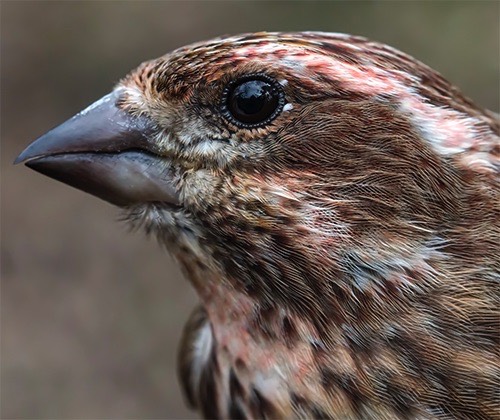











 Oct 15 to Mar 15:
Oct 15 to Mar 15: Please report your
Please report your